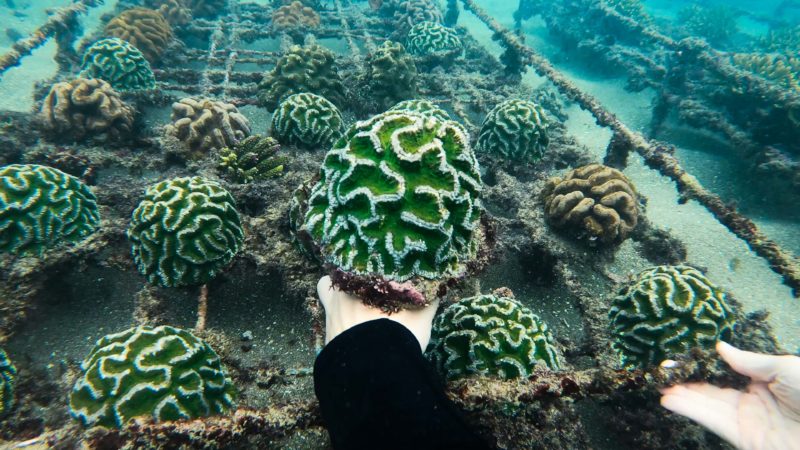

Textile industry is the second most polluting
The concept of “fast fashion” has boosted clothing consumption over the last quarter of a century. This is a very aggressive model for the environment, which has led the textile industry to become the second most polluting in the world. The situation is beginning to change, but the supposed circularity is still a long way off.
If you are planning a trip to Chile this summer and decide to visit the stunning Atacama Desert, you will be surprised by an unwanted attraction. Thousands of tonnes of textile waste accumulate in what has become the world’s largest used clothing dump.
Unfortunately, it is not the only one. As Greenpeace reports, every year a huge amount of clothing ends up in landfills in far-flung places. And this problem is just the tip of the iceberg of the damage the textile sector causes to the environment.
Over the last quarter of a century, the “fast fashion” model promoted by giants such as Inditex, based on a high turnover of cheap, low-quality clothes, has driven clothing consumption through the roof. In the European Union, for example, the amount of clothes bought per person has increased by 40% since 1996. Each year, Europeans consume 26 kg of textiles and discard 11 kg, most of which are incinerated or end up in landfill. Only a tiny amount of clothing is recycled.
The second most polluting industry
The so-called circularity of the fashion industry is still a long way off. As the UN warned in 2019, it is the second most polluting sector in the world in several areas, after oil. And data from the European Parliament point in the same direction.
For a start, dyes and finishing products are responsible for 20% of global drinking water pollution. Some substances used to colour clothes end up in rivers, with the consequent impact on their flora and fauna. A paradigmatic case is that of Bangladesh, where rivers such as the Buriganga have periodically changed colour due to the hundreds of tanneries installed on their banks.
Another issue is the enormous amount of water resources required by the textile industry: to produce a single cotton T-shirt, 2,700 litres of water are needed, the same as a person drinks in several years. Cotton is one of the most water-intensive crops in the world.
The situation does not improve in the case of synthetic fibres such as polyester and nylon. Although in these cases the water consumption is lower, their carbon footprint increases as they are derived from petroleum. In total, it is estimated that the fashion industry generates 10 % of global CO₂ emissions.
Furthermore, the washing of synthetic clothing, which is not biodegradable, releases half a million tonnes of microfibres every year. This is 35% of the primary microplastics that end up in the oceans, according to a report by the International Union for Conservation of Nature.
Towards a more circular sector
Environmental organisations are calling for a paradigm shift in the textile industry to make it more sustainable and for an international agreement to ban the export of textile waste.
The European Union has already urged governments to establish stricter laws on the production and recycling of clothing to reduce its ecological footprint. In fact, EU countries are obliged to have a separate collection of textiles by 2025 and the circular economy action plan aims for a fully carbon-neutral economy by 2050.
The European strategy includes new eco-design requirements for textile products, clearer consumer information and a digital passport for garments. The idea is to make manufacturers responsible for their products along the entire value chain and to make it easier for consumers to choose more sustainable clothing thanks to the Ecolabel.
Beyond the regulatory framework, individual awareness is crucial. In this respect, a recent OCU survey gives grounds for optimism, with 36% of respondents already avoiding “fast fashion” brands, 84% saying they do not buy more clothes than necessary and 89% donating or recycling their clothes. If the trend takes hold, perhaps the Atacama Desert can remain just that: a desert.
If you want to wash your clothes without polluting the planet, 11Onze Recommends Natulim.
If you liked this article, we recommend you read:
 Sustainability
Sustainability“Buy the clothes, but make them last”
3 min readThe fashion industry is one of the most polluting industries on




ostress!!
Doncs sí, és talment així, Joan!!!
Un altre pal a les rodes, els residus textils. cal també avançar en no fer abocadors textils sinó que sigui circular.
Molta raó, Jordi, i moltes gràcies pel teu comentari!!!
Molt interessant!
Ens alegrem Jana que t’hagi semblat interessant. Seguim!
Desitjo que el desert d’Atacama continuï sent només un desert.
Comparteixo el teu desig, Pere!
Important mencionar que la histrionica producció conseqüència d’aquesta moda ràpida, de múltiples col·leccions anuals, està implicant unes condicions laborals del tot alienadores per a moltes treballadores de les empreses subcontractades a Àsia que fabriquen per aquestes marques populars.
Moltes gràcies pel teu comentari, Laura!!!
👍
Gràcies, Manel!!!